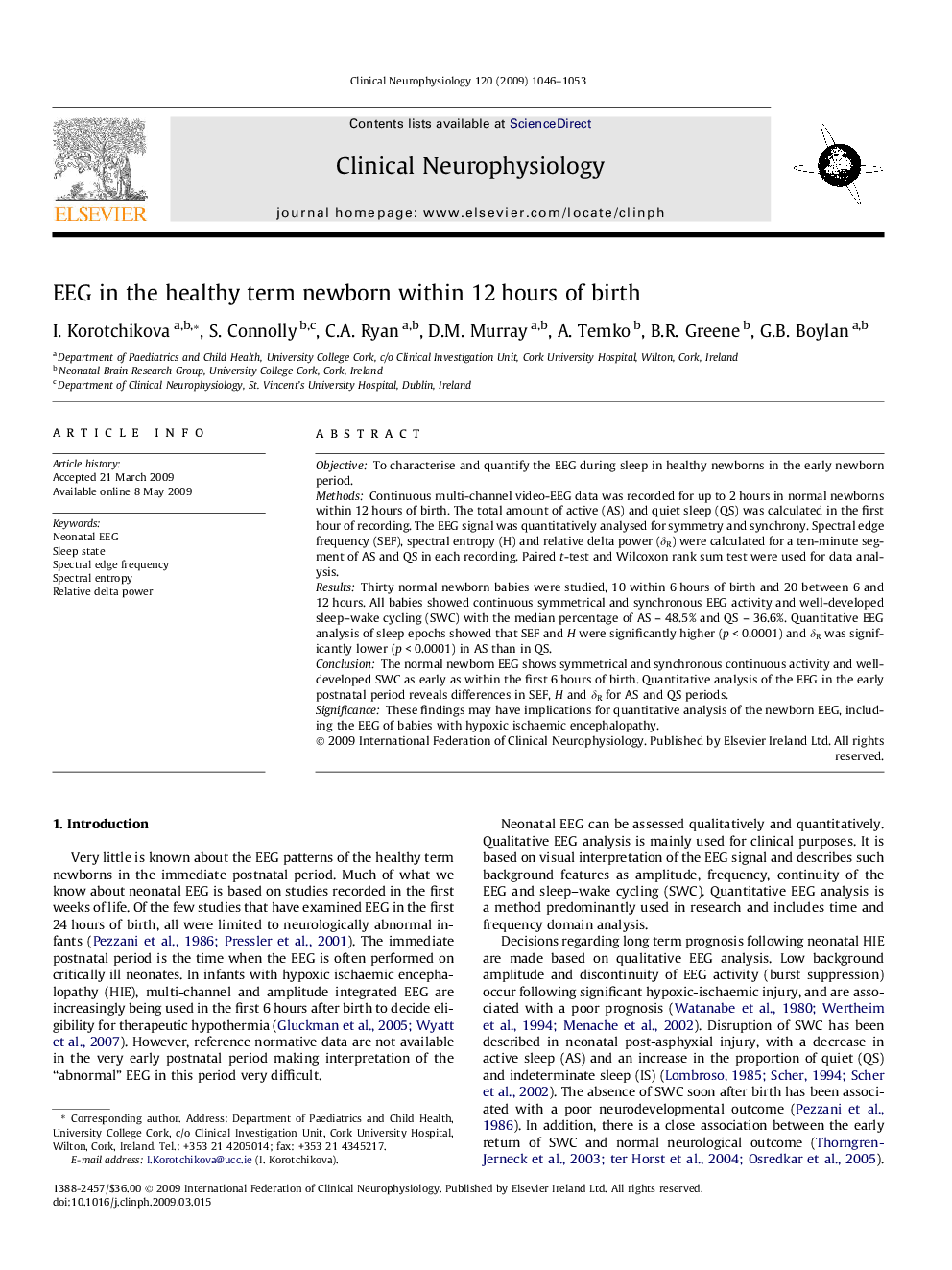| Article ID | Journal | Published Year | Pages | File Type |
|---|---|---|---|---|
| 3046523 | Clinical Neurophysiology | 2009 | 8 Pages |
ObjectiveTo characterise and quantify the EEG during sleep in healthy newborns in the early newborn period.MethodsContinuous multi-channel video-EEG data was recorded for up to 2 hours in normal newborns within 12 hours of birth. The total amount of active (AS) and quiet sleep (QS) was calculated in the first hour of recording. The EEG signal was quantitatively analysed for symmetry and synchrony. Spectral edge frequency (SEF), spectral entropy (H) and relative delta power (δR) were calculated for a ten-minute segment of AS and QS in each recording. Paired t-test and Wilcoxon rank sum test were used for data analysis.ResultsThirty normal newborn babies were studied, 10 within 6 hours of birth and 20 between 6 and 12 hours. All babies showed continuous symmetrical and synchronous EEG activity and well-developed sleep–wake cycling (SWC) with the median percentage of AS – 48.5% and QS – 36.6%. Quantitative EEG analysis of sleep epochs showed that SEF and H were significantly higher (p < 0.0001) and δR was significantly lower (p < 0.0001) in AS than in QS.ConclusionThe normal newborn EEG shows symmetrical and synchronous continuous activity and well-developed SWC as early as within the first 6 hours of birth. Quantitative analysis of the EEG in the early postnatal period reveals differences in SEF, H and δR for AS and QS periods.SignificanceThese findings may have implications for quantitative analysis of the newborn EEG, including the EEG of babies with hypoxic ischaemic encephalopathy.
